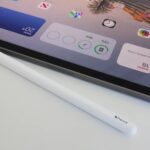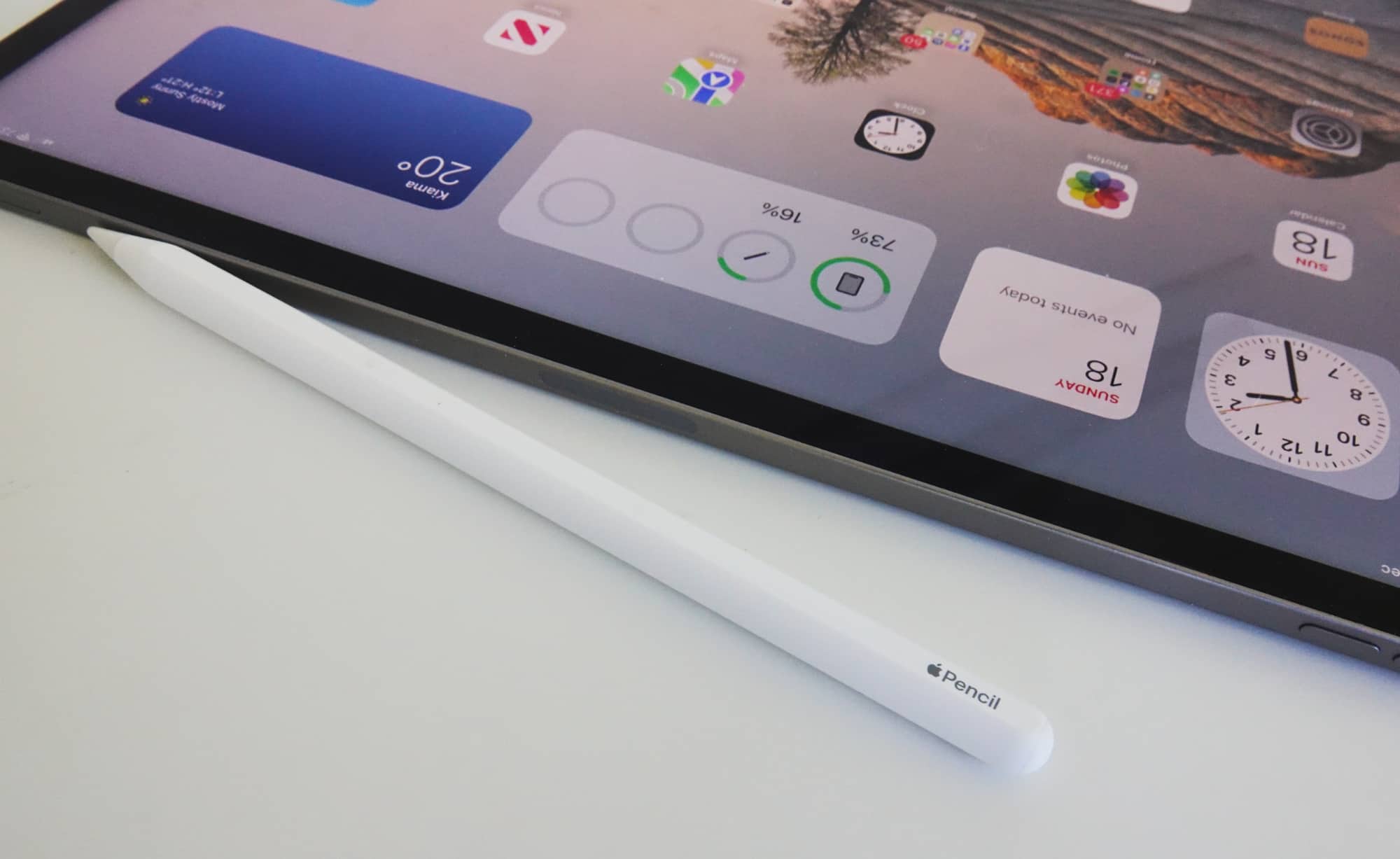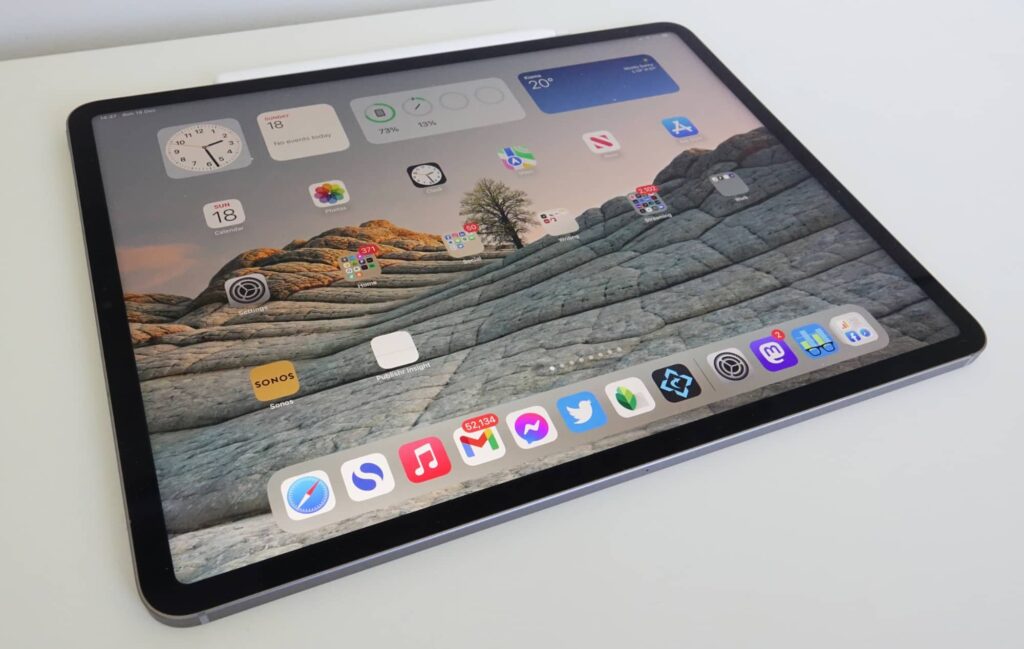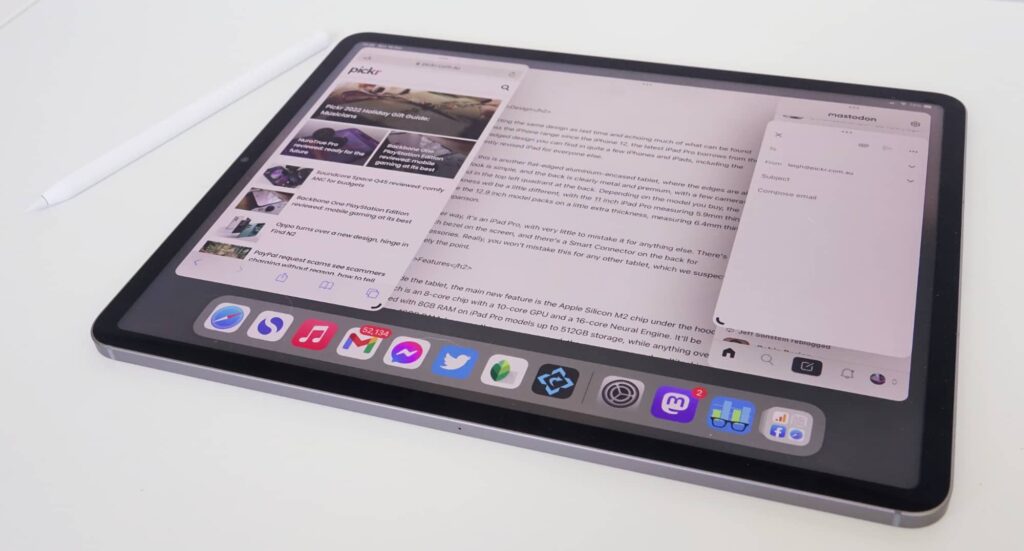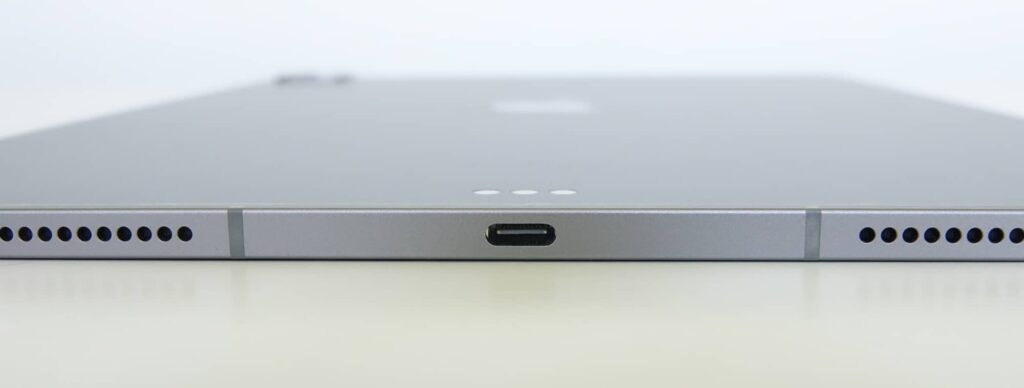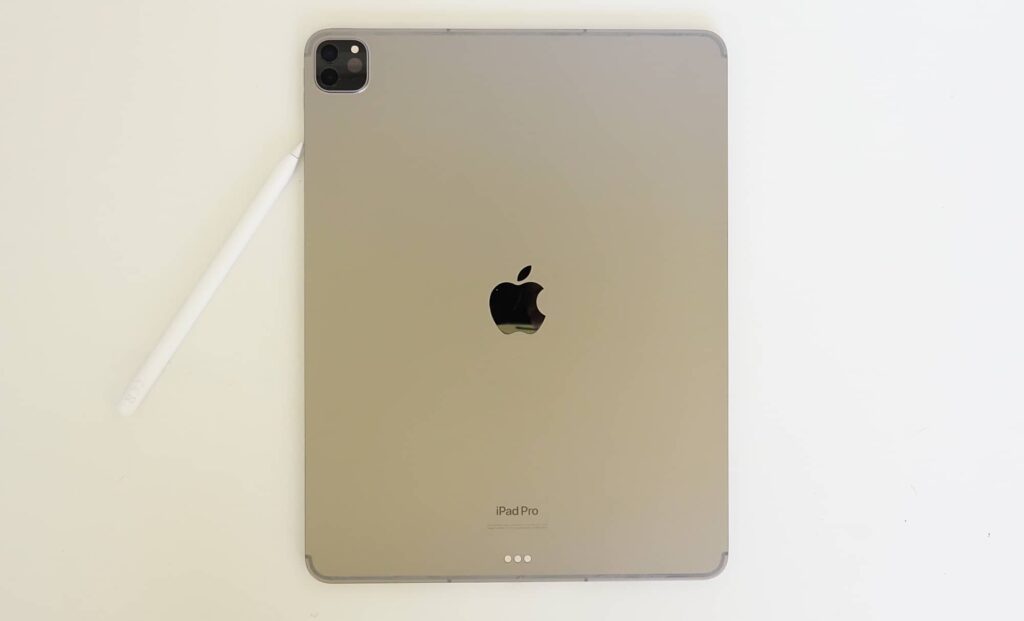Quick review
The good
The not-so-good
More than “yet another content consumption device”, the M2 iPad Pro has so much power, you won’t know what to do with it. Is it worth the price?
It wouldn’t be a new year without a new iPad, and lucky us, we’ve seen more than one this year. There’s been an update to the basic model, an update to the Air, and now an update to the professional line, for folks who need to get a little more out of their content creation experience.
This year’s iPad Pro model may look a whole lot like last year’s, but there’s a big change on the inside, as Apple updates the hardware under the hood to borrow a page from Apple’s laptops. Is the M2 iPad Pro a tablet worth checking out, and can you make use of all that power inside?
Design
Sporting the same design as last time and echoing much of what can be found across the iPhone range since the iPhone 12, the latest iPad Pro borrows from the flat-edged design you can find in quite a few iPhones and iPads, including the recently revised iPad for everyone else.
Yes, this is another flat-edged aluminium-encased tablet, where the edges are alloy, the look is simple, and the back is clearly metal and premium, with a few cameras found in the top left quadrant at the back. Depending on the model you buy, the thickness will be a little different, with the 11 inch iPad Pro measuring 5.9mm thin, while the 12.9 inch model packs on a little extra thickness, measuring 6.4mm thin by comparison.
Either way, it’s an iPad Pro, with very little to mistake it for anything else. There’s not much bezel on the screen, and there’s a Smart Connector on the back for accessories. Really, you won’t mistake this for any other tablet, which we suspect is largely the point.
Features
Inside the tablet, the main new feature is the Apple Silicon M2 chip under the hood, which is an 8-core chip with a 10-core GPU and a 16-core Neural Engine. It’ll be paired with 8GB RAM on iPad Pro models up to 512GB storage, while anything over will see 16GB RAM, because the more you spend, the more power and multitasking you’re likely to get done.
However, most of what else is here is about what it was last time and last year, with four speakers in each, five microphones, a 12 megapixel F2.4 camera found on the left edge in landscape or up at the very top in portrait mode, the latter of which sits along the Face ID technology Apple uses for facial unlock.
Two cameras can be found on the back, using a 12 megapixel F1.8 wide camera and a 10 megapixel F2.4 ultra-wide, with neither camera setup quite as impressive as what’s on the iPhone 14 models this year, though there is a LiDAR Scanner on the back like what can be found on the Pro and Pro Max phones.
There’s support for 802.11a/b/g/n/ac/ax WiFi 6E, plus Bluetooth 5.3, and if you go for the cellular M2 iPad Pro, you’ll find support for 5G on the sub-6 band and GPS. Sadly, there’s no support for the mmWave 5G tech in Australia on the iPad Pro just yet.
Display
One feature that hasn’t changed at all is the screen, with the 11 inch getting an LED-backlit IPS screen with a resolution of 2388×1668, while the 12.9 inch iPad Pro we reviewed sees the same 12.9 inch mini-LED backlit IPS screen as last year running a resolution of 2732×2048.
Apple didn’t really need to upgrade the tech here, though we’d have liked to see mini-LED tech in the 11 inch, not just the 12.9 inch model. That hasn’t happened, so the 12.9 inch iPad Pro is clearly still the model to consider, getting one of the best screen technologies save for OLED, which hasn’t made an appearance on an Apple tablet yet.
Both models see the excellent white balancing feature of True Tone, the P3 colour gamut, and the ProMotion speed technology which isn’t quite as capable as what’s offered from ProMotion on the iPhone 14 Pro where the screen works on standby, but is still able to control the screen speed dependent on what you’re doing at the time.
There’s support for Apple Pencil hover, though, so if you have an Apple Pencil, you get a sort of preview of what’s going to happen before you press the tip of the stylus down. That’ll be handy for artists keen to see the brush stroke before it happens.
In-use
Scrawling and scribbling with the Apple Pencil is but one way to use the iPad Pro, but there are others. You can use your fingers like any other iPad, and you can bring over a keyboard if you like, be it one Apple makes that costs over $500, or even a third-party keyboard, such as an option from Brydge.
Like all other tablets, you’ll push and prod and touch the iPad Pro, swiping for gestures, typing on the on-screen keyboard, and if you bring in an external keyboard, you can also use a mouse with the tablet, as Apple comes full circle for its post-PC device, effectively turning it into a laptop for folks who want or need that.
Of course, there are also new features for the usability, including one that aims to help the iPad’s conversion into a sort-of laptop.
Announced earlier in the year, the one to be aware of is Stage Manager, found inside iPadOS 16, and this aims to make the iPad Pro (and other supports iPad models) into more like a proper laptop or desktop, with a way of keeping more stuff on screen.
You’ll get a list of recent apps on the left side, plus the regular dock at the bottom, and you can move windows of apps into the view and have what is essentially stacks of up to four apps that you can work on. Stage Manager replaces the split screen approach to multitasking iPads have offered for a few years now, but you can actually resize the windows in Stage Manager, so you’re not stuck with just fixed widths taking up one third or half the screen.
Overall, it’s a little like using a proper desktop, kinda sorta, though it is something you have to enable in the settings, and that means it may not be for everyone. Some folks will use it, but others will probably just end up using this iPad Pro like any other iPad.
Performance
While the usability doesn’t change, the chip inside does, and it offers a lot of performance. The M1 in last year’s model was already quite advanced, but Apple has thrown that into this year’s excellent iPad Air, so it’s no longer quite as special.
So to get the iPad Pro into the top tier tech once again, what is Apple doing? It’s turning to the M2 in its 13 inch MacBook Pro, which is the same chip in the M2 MacBook Air.
Unsurprisingly, being Apple's brand new chip for 2022 helps it make the iPad Pro Stand out quite significantly, with a solid burst of performance you can see in the benchmarks quite obviously, especially when compared with the prior model. It's a boost in a big way, though good luck finding something that makes use of the new hardware.
Battery
The battery is about the same as before, however, with around 9 to 10 hours max depending on what you're doing, with the iPad Pro typically needing a nightly charge if you use it often throughout a day, or able to last 2 or 3 days if you don't.
Fortunately, the iPad Pro charges on a Type C connector, so if you already use one of those for a MacBook, you know how easy it is to grab and plug in. Apple is no stranger to Type C, of course, and just about the only major products left that don't support it are in the iPhone range, though that could change next year with the EU forcing all manufacturers to Type C as a standard.
Value
With no major qualms about the battery, one area you might struggle with is the price, because this is Apple's most expensive iPad, and one that pushes up against Apple's relatively inexpensive M2 MacBook Air. This year, both models sport the M2 chip, with the main difference being one is a tablet with a touchscreen and supports the Apple Pencil, and the other is a laptop.
This year, the iPad Pro starts at $1899 for the 128GB M2 iPad Pro 12.9 inch, while the 256GB 13.6 inch M2 MacBook Air also starts at $1899, making the prices very confusing indeed. Keep in mind, the $1899 iPad Pro price doesn't come with a keyboard, which costs an extra $579 for the 12.9 inch iPad Pro, making for a nearly $2500 128GB iPad Pro replacement for a MacBook or another laptop.
So let us just say this: you probably shouldn't consider this year's iPad Pro as a laptop replacement. The value just doesn't make sense. In fact, at $2349 for the 512GB MacBook Air versus $2429 for the 512GB iPad Pro (or $2679 for the 5G model), the Air is the better laptop choice. They're close to being evenly matched when used as a laptop, with the benchmarks showing minor differences when compared against each other.
However, the iPad Pro isn't just a laptop. With a touchscreen on the front, cameras on the back, Face ID login system, and support for 5G, the iPad Pro is for content creators needing just a little more from their portable computing experience.
Despite the differences, we're not sure the value is easy to find here. Apple charges a premium for its premium portable, and that is clearly evident. The $1899 cost may well be the starting price for 128GB, but it can hit as high as $4099 for a 5G 2TB iPad Pro. Yikes.
The problem with citing issues with value is there aren't many tablets that truly compete. You can push this year's Surface Pro 9 to the nth level and snag a 12th-gen Core i7 model with 32GB RAM and 1TB SSD for $4149 in Australia, and it still won't quite be the same. It'll be a similar high-end tablet, but it won't be the same. Samsung's makes the Tab S8 Ultra with a pen, but it maxes out at 256GB, so again, we're not talking about a like-for-like comparison there, either.
The point is that very little is offered as a direct competitor against the iPad Pro, and so if you're looking for the best tablet for content creation in the Apple ecosystem out there, it's basically Apple's iPad Pro or nothing, which makes its value just that much more difficult to account for.
We don't believe it's necessarily worth it, though, and we could find value in the Apple Watch Ultra. This one will just be too hard a price of a tablet to swallow.
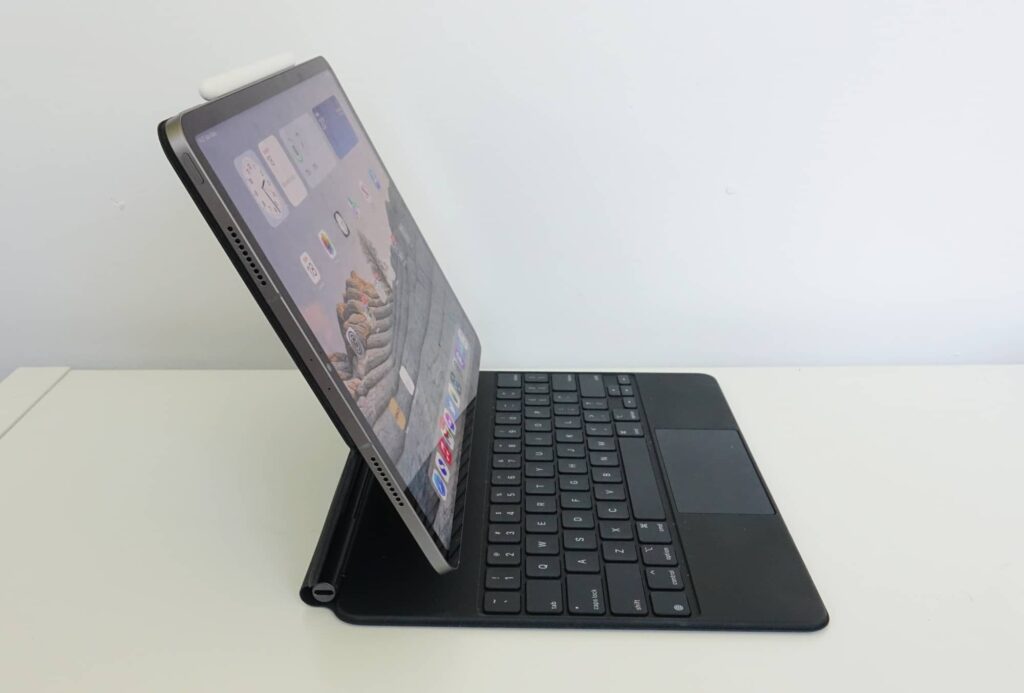
What needs work?
But if you can swallow that price, and if money is no object, the iPad Pro is a solid machine. Beautifully designed and packing in an impossibly solid performance, this year's iPad Pro is as hard to argue with as it was in 2021, and the M2 iPad Pro is a winner. So what's wrong with it?
Well, not much. Apple could have placed that webcam a little better like it did on the 10th-gen iPad, shifting it so that it looked better on the horizontal edge, but that's a minor issue.
Really, if we want a real bone to pick, it would have to do with the software and what the tablet can do with all that performance.
The problem is, the answer is nothing. There is nothing that M2 iPad Pro can do with all that extra performance, because while the M2 is a capable chip, there's really nothing that takes advantage of the M2's prowess, at least not yet.
It hasn't been long since Apple released the M2 iPad Pro, but even last year's M1 iPad Pro struggles to find something that can push the iPad to a wall, which means the M1 iPad Air is still really capable. There are some differences, such as how you can't find a big screened Mini-LED iPad Air, not to mention how the screen isn't quite as fast on the Air compared with the Pro, but those chip differences are hard to spot.
Yes, the benchmarks make it clear -- the M2 iPad Pro is super-fast -- but good luck finding anything that really takes advantage of the hardware update. It just doesn't exist.
That could change in time, and it's entirely possible that over time, Apple could make its desktop-class apps run on the mobile-class iPad Pro. It's doubtful we'll see macOS arrive on the iPad, but we're still missing Xcode, Final Cut Pro, and Logic Pro on the iPad, and those would be fine examples of apps that could take advantage of all the power of the M2 on the iPad Pro, or even the M1 of previous versions.
Right now, though, the M2 iPad Pro just feels like an update for update's sake, and while that's not bad, good luck finding something that takes advantage of all that amazing power.
Final thoughts (TLDR)
Pro users shouldn't let that bother them, though. While they won't find an app that truly takes advantage of the M2 inside, that doesn't matter, and there may be something around the corner, with Blackmagic working on a version of Da Vinci Resolve for the Apple Silicon in the iPad Pro.
It's a shame that we've not yet seen Apple find a way to take full advantage of the hardware inside, but it does tell you just how future proof the 2022 iPad Pro is.
A properly powerful portable, this thing is good for years, for sure. And maybe in a few years, we might even have something that makes the system work for its supper, too. Recommended, provided you can afford it.
